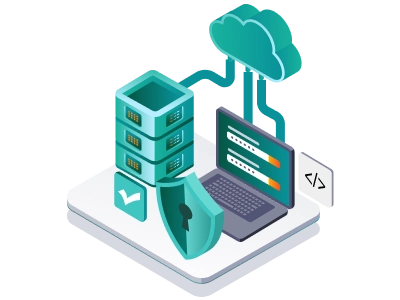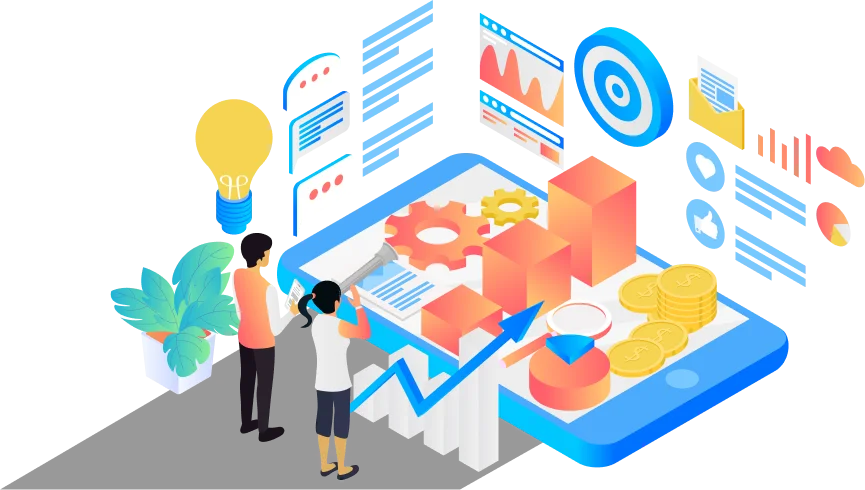So many companies are switching to cloud environments now at a pace higher than ever before. While companies get scalability, flexibility, and cost savings with the cloud platforms, they bring with them new security threats that traditional approaches can't handle. 61% of organizations experienced a cloud security incident in 2024, with 21% resulting in data breaches. Thus, with the growing complexity of cloud-native applications, security cannot be an option anymore.
The solution for this? - DevSecOps
DevSecOps (Development, Security, and Operations) is a technical and cultural evolution. It injects end-to-end cloud security through the software development lifecycle (SDLC). Once you introduce security into CI/CD pipelines, you can quickly catch vulnerabilities, reduce risks, and secure your software. That’s why 36% of the organizations are using DevSecOps practices to develop software.
What Is DevSecOps: Beyond the Toolset
DevSecOps is really about shifting security left — injecting security checks and automation into the earliest stages of app design and development. Rather than security as a last gatekeeper before deployment, it's integral by design.
What is DevSecOps really all about?
Culture and Collaboration
Security isn't isolated anymore. Developers, security professionals, and operations staff collaborate from the start, building a shared responsibility model.
Security Automation
Manual security scans hold development back and are error-prone. DevSecOps counts on automated tools to scan code, detect vulnerabilities, and apply policies in CI/CD pipelines.
Continuous Security Testing
Testing doesn't end with development. Security testing occurs continuously at integration, deployment, and even production phases.
Policy as Code
Security policies are codified and version-controlled, enabling consistent enforcement across environments.
DevSecOps is a mindset shift as much as a process shift — and it's critical in today’s cloud-native, microservices-driven world.
Want To Improve Your Cloud Security with DevSecOps?
At White Label Fox, we specialize in integrating security seamlessly into your software development lifecycle.

Why Cloud Environments Need DevSecOps?
Cloud environments are incredibly agile, but this also expands the attack surface. With misconfigured storage buckets, exposed APIs, and container vulnerabilities, there are a million ways that cloud applications can be hacked if security isn't proactive.
That’s why it’s critical to regularly assess your cloud security to identify and mitigate potential risks before they escalate.
These are the main reasons that DevSecOps is important in cloud-based environments:
1. Dynamic Infrastructure Demands Dynamic Security
Existing security tools and procedures are designed for static on-premise environments. Cloud resources, on the other hand, are dynamic — they can be spun up or down in a matter of seconds. DevSecOps brings real-time security scans and automated responses that are as agile as the cloud.
2. Speedier Release Cycles Require Built-In Protection
The velocity of new CI/CD pipelines allows for updates to the software to be released hourly, or even daily. Baking security into such pipelines means that vulnerabilities are detected before they go into production, without hindering development.
3. Shared Responsibility Model in the Cloud
Cloud providers such as AWS and Azure are run on a shared responsibility model — they secure the cloud infrastructure, but you must secure the apps and data inside it. DevSecOps assists groups in accomplishing their half of this model with automated security integration.
4. High Compliance Standards
Verticals such as healthcare, finance, and e-commerce are required to comply with stringent standards (e.g., HIPAA, PCI-DSS, GDPR). DevSecOps enables continuous compliance by mandating security policies automatically across the SDLC.
5. Security Scalability for Containers and Microservices
With Kubernetes, serverless functions, and containerized applications growing in popularity, perimeter security no longer keeps up. DevSecOps implements security controls across every layer — from source code and container images to network settings and runtime behavior.
Key DevSecOps Principles in the Cloud
Implementing DevSecOps successfully in a cloud requires more than a couple of tools. It calls for a change in principles, workflows, and team culture. Follow these building blocks of principles:
1. Shift Left Security
Security needs to be brought in at the initial stage of development, from the planning phase onwards. Having static code analysis tools integrated into IDEs or Git repositories ensures bugs are trapped prior to the very first build.
2. Security as Code
All of the cloud is code — infrastructure, configurations, and policy. DevSecOps extends the same concept to security. Technologies such as Terraform, AWS Config, or Open Policy Agent (OPA) allow teams to write security policies as code and apply them automatically.
3. Real-Time Monitoring and Response
DevSecOps does not end with deployment. Cloud-native monitoring solutions such as AWS CloudTrail, Azure Monitor, or Datadog assist in identifying unusual behavior in real-time. Coupled with automated incident response, this offers runtime protection and quicker mitigation.
4. Continuous Compliance
Rather than periodic audits, DevSecOps brings compliance into the fold as an ongoing process. Using standards such as CIS Benchmarks, NIST, and ISO 27001, teams can construct automated checks to verify that compliance needs are satisfied throughout the development and deployment process.
5. Education and Collaboration
Security is everybody's responsibility — developers, QA engineers, and everyone in between. A DevSecOps culture promotes:
- Frequent security training
- Transparent documentation
- Open communication among development, security, and operations teams
The payoff: fewer exposures, accelerated incident response, and more robust collaboration overall.
Deploying DevSecOps in Cloud-Native CI/CD Pipelines
At the core of DevSecOps is the frictionless combination of security with CI/CD pipelines — a discipline that makes security a built-in, ongoing process of software delivery rather than an outside checkpoint. Cloud-native CI/CD platforms facilitate baking security into build, test, and deploy processes (with greater ease and necessity).
Here's how to incorporate DevSecOps into a contemporary cloud pipeline:
Think your cloud setup is safe? This DevSecOps guide could change your cloud service consultation approach.
1. Secure Code from the First Commit
Begin security at the source. Utilize pre-commit hooks and static application security testing (SAST) tools in your Git repositories to scan for patterns of insecure code, hardcoded secrets, and dependency vulnerabilities before they even reach the CI pipeline.
Popular tools:
- Git hooks, Pre-commit, or Husky for early validation
- SonarQube, Checkmarx, or CodeQL for static code analysis
2. Embed SAST, DAST, and SCA into CI Workflows
Code should go through multi-layered analysis once in the pipeline:
- SAST to find internal code problems
- DAST to test live application behavior (particularly for APIs or web applications)
- SCA to scan third-party packages (highly important in modern microservices)
These need to be automated and executed on every merge or pull request.
3. Policy Gates and Approval Workflows
Set up policy-as-code checks using tools like OPA (Open Policy Agent) or Conftest. These checks can enforce rules such as:
- Blocking builds if critical CVEs are found
- Preventing deployments if security tests fail
- Enforcing encryption settings in Terraform or CloudFormation scripts
CI tools like GitHub Actions, GitLab CI, Jenkins, and Azure DevOps make it easy to add these checks as stages in your pipeline.
4. Secrets Management
Don't keep secrets in code or config files. Utilize cloud-native secret stores such as:
- AWS Secrets Manager
- HashiCorp Vault
- Azure Key Vault
Implement them securely in the pipeline through API tokens or IAM roles.
Security Automation: Tools and Techniques
Automation in DevSecOps is the key to scalable security. Manual checks and ad-hoc scans simply aren't possible to keep pace with today's release speed. Security automates repeatability, velocity, and consistency for deployments.
Consider major automation strategies:
1. Infrastructure as Code (IaC) Security Scanning
Cloud infrastructure is provisioned through code using tools such as Terraform, Pulumi, or CloudFormation. The scripts need to be scanned prior to provisioning in order to detect misconfigurations like:
- Publicly accessible S3 buckets
- Unsecured security groups
- Storage volumes without encryption
Tools to use:
- Checkov
- tfsec
- CloudSploit
- Bridgecrew
These tools scan IaC files in CI/CD and prevent deployments with severe misconfigurations.
2. Automated Vulnerability Management
Integrate solutions that continuously scan deployed workloads, images, and containers for known vulnerabilities. If used with cloud registries or runtime environments, the solutions eliminate vulnerable components before they can do harm.
Widely used tools:
- Aqua Trivy (container scanner)
- Clair or Grype (image vulnerability scanners)
- AWS Inspector or Google Container Analysis
Implement alerting and automated remediation or rollback in case of critical vulnerabilities in production environments.
3. Automated Compliance Checks
Most cloud security best practices (CIS Benchmarks, NIST, PCI DSS, HIPAA) can be formalized in checks that continuously operate across environments.
Such tools as:
- Cloud Custodian
- AWS Config Rules
- Terraform Sentinel
Automation of these checks provides continuous compliance in DevOps pipelines — not only yearly audits.
4. Automated Security Alerts and Response
Leverage cloud-native services (e.g., AWS CloudTrail, Azure Defender, GCP Security Command Center) in conjunction with SIEM or SOAR platforms to:
- Identify threats in real-time
- Send alerts to Slack/Email
- Automatically quarantine infected resources or initiate rollbacks
This method allows zero-trust security enforcement and super-fast response.
Best Practices for Cloud Security in a DevSecOps Model
DevSecOps is most effective when it's complemented by sound security hygiene, standardized policies, and best practices for cloud-native architecture.
These are some actionable best practices to adopt:
1. Use a Zero Trust Architecture
Never take anything secure by default. Always check:
- Enforce rigorous IAM roles and least-privilege policies
- Implement multi-factor authentication for all user access
- Implement network segmentation, firewalls, and VPC peering controls
2. Encrypt Everything – In Transit and At Rest
Encrypt all data — both while in transit between microservices and being stored in databases — using technologies such as TLS 1.2+ or AES-256. Utilize cloud-native encryption services with managed keys (KMS).
3. Regularly Update Dependencies and Patches
Implement automated dependency checks in pipelines (with Dependabot, Renovate, etc.). Keep images, packages, and base OS layers current.
If vulnerabilities are detected:
- Block builds
- Alert developers through CI
- Automatically roll out patch updates to staging
4. Version Control and Audit Logs for All
All changes — from infrastructure to application configuration — must be version-controlled and trackable. Turn on logging services and store logs for audit purposes:
- AWS CloudTrail
- Azure Monitor Logs
- ELK or Loki stacks
Integrate logs with monitoring platforms such as Prometheus or Grafana for end-to-end observability.
5. Embed a Security-First Culture
The right tools will not work if your team is not in sync on security objectives. Success with DevSecOps demands:
- Secure coding training for developers
- Security champions within every team
- Blameless postmortems on security failures
- Marking security victories along with delivery milestones
Solving Common DevSecOps Challenges
Although the vision of DevSecOps is compelling, incorporating security into the high-speed world of today's DevOps processes is not without challenges. Below are the most frequent organizational challenges—and how to effectively overcome them.
1. Cultural Resistance and Lack of Awareness
This transition to DevSecOps necessitates a culture of common responsibility, but that is easier said than achieved. Security might be seen as a blocker by dev teams, and security teams might not have visibility into the agile and CI/CD culture.
How to overcome it:
- Organize cross-functional workshops and secure coding boot camps.
- Appoint Security Champions in dev teams to act as bridges.
- Develop a blameless culture where vulnerabilities and misconfigurations are learned from.
2. Complexity of Toolchain
Given there are many different tools to scan code, secure containers, analyze IaC, and protect at runtime, teams may fight integration and duplication.
Solutions:
- Standardize on a single platform where it makes sense (e.g., Snyk, Prisma Cloud, or Aqua Security).
- Employ automation for condensing findings from multiple tools into one dashboard.
- Utilize APIs and webhooks to integrate tools directly into your CI/CD platform for contextual awareness.
3. False Positives and Developer Burnout
Excessive security alerts—particularly low-priority or irrelevant ones—may annoy developers and cause alert fatigue. This lowers confidence in the security process and prolongs issue resolution.
Strategies:
- Tune scanning rules to prioritize important vulnerabilities.
- Utilize severity-based triage mechanisms to direct alerts correctly.
- Allow developers to ignore or recognize issues already under investigation.
4. Multi-Cloud and Hybrid Environment Security
Most businesses are choosing a hybrid cloud or multi-cloud environment. In this case, protecting workloads across AWS, Azure, and on-premise infrastructure is difficult. It is because of varying APIs, tools, and configurations.
Best practices:
- Utilize cloud-agnostic security frameworks through tools such as Terraform, OPA, and Crossplane.
- Centralized policy enforcement and monitoring platforms.
- Periodically scan cloud accounts against standardized compliance checklists (e.g., CIS).
Future of DevSecOps in Cloud-Native Development
As businesses increasingly deploy cloud-native technologies such as Kubernetes, serverless computing, and microservices, DevSecOps is becoming an even more advanced practice.
This is what the future will look like:
1. AI and ML in Threat Detection
Artificial Intelligence (AI) and Machine Learning (ML) are starting to augment DevSecOps processes by:
- Identifying abnormal behavior or anomalies in real-time
- Foreseeing vulnerabilities based on patterns of code
- Automatically prioritizing security alerts from a historic perspective
These technologies will minimize the latency between threat detection and mitigation, allowing proactive management of security.
2. Shift-Left and Shift-Right Security
As DevSecOps has pushed for "shift-left" security (baking security early in the SDLC), the future also emphasizes shift-right security—providing observability, resiliency, and incident response in production.
Look for greater adoption of:
- Chaos engineering for resiliency testing for security
- Runtime Application Self-Protection (RASP)
- Integrated SOAR tools
3. Security-as-Code Becoming the Norm
As companies grow up, Security-as-Code will be handled in the same way as Infrastructure-as-Code:
- Security policies versioned together with application code
- Enforced at each step in CI/CD through automated gates
- Audited and approved through pull requests
It guarantees consistency, repeatability, and traceability of all security decisions.
4. Compliance-Driven DevSecOps
With growing regulatory attention and data privacy issues, DevSecOps will further map to compliance automation. Organizations will depend on tools that constantly scan and enforce compliance with:
- GDPR
- HIPAA
- PCI-DSS
- ISO 27001
This transformation guarantees that compliance is not a point-in-time activity but an ongoing, integral process in the software development lifecycle.
Secure Your Software From Day One!
Our DevSecOps experts are ready to assess your current setup, identify risks, and automate security within your CI/CD pipelines.
Final Thoughts
DevSecOps isn't a security fad—it's a strategic move that syncs cloud security with the software development lifecycle (SDLC). During the age of fast releases, distributed teams, and intricate cloud structures, depending on conventional security checkpoints is unsustainable.
By turning security on day one, automating it across the pipeline, and building it into your teams' culture, you get:
- Safer and faster deployments
- Reduced risk of misconfigurations and breaches
- Improved alignment between operations, security, and development teams
- Consistent compliance in DevOps without sacrificing innovation
At White Label Fox, our mission is to enable organizations to build secure, scalable, and strong cloud-native applications. Whether you are starting on your DevSecOps journey or looking to strengthen the security of what you have in place already, the optimal time to invest in secure software development is now.

















